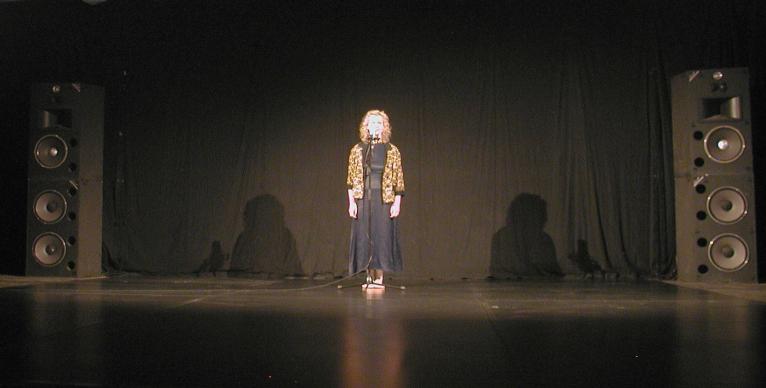| SELVE AMICHE - words: unknown / melody: Antonio
Caldara (1670-1763)
SPESSO VIBRA - words: unknown / melody: Alessandro Scarlatti (1660-1725)
DON'T EXPLAIN - words & melody: Billie Holiday (1915-1959)
TU CH'HAI LE PENNE - words & melody: GIULIO CACCINI (1545-1618)
LASCIATEMI MORIRE - words: Ottavio Rinussini / melody: Claudio Monteverdi
(1567-1643)
COME RAGGIO DI SOL - words: unknown / melody: Antonio Caldara
GOD BLESS THE CHILD - words & melody: Billie Holiday
NINA - words & melody: unknown (Naples, 17th century)
Ende der Siebzigerjahre beschäftigte ich mich ausführlich
mit anderen Stimmungen und Tonsystemen. Dabei entstand eine ganze
Reihe von Studien, zum Teil auf dem Cello, zum Teil auf Friedrich
Guldas altem Clavichord, das ich in den Nächten zwischen unseren
Proben benutzen und verstimmen durfte.
Einige Aufnahmen davon bilden das Ausgangsmaterial für die
Neukomposition der Begleitmusik zu den Liedern: eine Akkordstudie
in Sechsteltönen auf dem Cello, ein Cellomotive für linke
Hand allein (mit den charakteristischen Zweiklängen beider
Saitenabschnitte), einige Motive am Clavichord in einer 19-stufigen
Scala, und dazu noch das Schwirren eines in der Luft herumwirbelnden
Lederbandes.
Was hat das alles mit den Liedern zu tun ?
Ganz einfach: eine Melodie - und das ohne Begleitung gesungene Lied
ist der Inbegriff der Melodie - kann man nicht komponieren. Man
muss sie finden, heraufholen aus dem Fundus der Zeit.
Die Darstellung einer Melodie in einem tonalen und rhythmischen
System ist bereits Interpretation, dementsprechend auch jede Art
von Begleitung, sei sie nun 'original' oder nicht. In diesem Sinne
ist die Komposition einer neuen Begleitmusik mit den Mitteln der
Computermusik nicht weniger legitim, als die Begleitung etwa durch
ein Klavier oder ein Orchester.
Vielleicht bin ich mit meiner Interpretation ursprünglichen
Intentionen sogar näher gekommen als so manche entschärfte
und geradegebogenen Adaptionen und Arrangements, in denen uns die
Lieder heute - unter dem Deckmantel einer sakrosankten Tradition
- gerne vorgesetzt werden.
G.R.

Alexandra Sommerfeld bei der Perfromance
von BELCANTO, Wien 2003
Foto Otto Jekel
|
